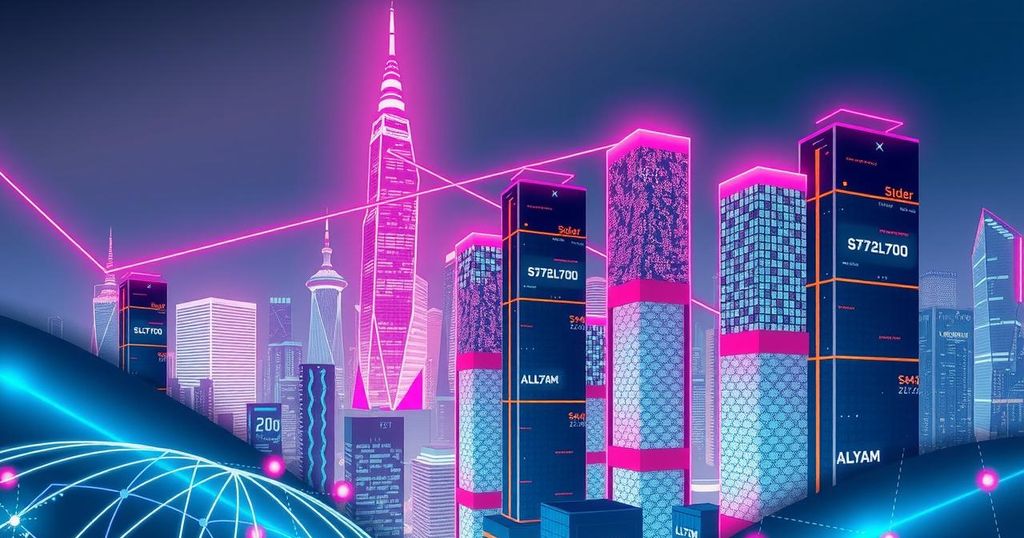Iran aspires to become a top AI superpower, as articulated by Mohammad Mokhber at an international conference. However, the nation faces significant challenges, including infrastructural deficits, a brain drain, and geopolitical isolation, which hinder its ability to realize these ambitions. Without revamping its strategies and fostering international partnerships, Iran’s aspirations for AI supremacy may remain unfulfilled.
In the competitive landscape of artificial intelligence, Iran encourages aspiration to be counted among the world’s top ten AI superpowers. This ambition was articulated by Mohammad Mokhber, Special Assistant to the Supreme Leader, during the recent international conference on ‘AI and Future Civilization.’ However, despite this aspiration, many challenges such as infrastructural deficits and geopolitical realities may hinder Iran’s transformation from an AI consumer to a developer.
Mokhber’s vision emphasizes empowering the youth, improving education, enhancing research, and fostering tech startups. While these initiatives are fundamental for sustaining an AI ecosystem, Iran’s current standing—placing 94th out of 193 countries in the Government AI Readiness Index 2024—highlights the significant gap between Iran and its regional counterparts, including the UAE, Israel, and Saudi Arabia.
While nations like the UAE and Saudi Arabia heavily invest in AI infrastructure and international partnerships, Iran faces significant obstacles, including fragmented digital infrastructure and inconsistent policy implementations. The UAE’s strategic collaborations with tech companies such as BlackRock and Microsoft juxtaposes Iran’s lack of a cohesive national AI strategy, compounded by international sanctions that restrict foreign investment and technology access.
A robust infrastructure, encompassing high-speed internet and reliable energy, is essential for any AI-aspiring country. The United States and China invest billions in cloud computing and state-of-the-art R&D facilities, but Iran grapples with infrastructural deficits across data, energy supply, and human capital.
Iran’s data and computing infrastructure is inadequate for AI research and implementation. Slow internet speeds hinder access to resources, and a lack of cloud computing facilities limits AI model training. Moreover, export controls restrict access to vital semiconductor technologies, jeopardizing the country’s potential AI developments.
The emigration of talented professionals represents another significant barrier to achieving AI ambitions; nearly 180,000 educated individuals leave Iran annually due to economic and political factors. This brain drain threatens to cripple the development of an advanced tech ecosystem in Iran, undermining its competitive capabilities in AI research and advancement.
Addressing the energy crisis is also crucial for AI progress. Iran’s substantial natural gas reserves contrast with its daily gas deficit of 350 million cubic meters, leading to frequent power outages. This energy instability disrupts operations critical to AI, adversely affecting computing systems reliant on consistent power.
R&D investment is a cornerstone of any AI initiative. While Iran’s National Development Fund allocated $115 million for AI research in January 2025, this is minuscule when compared to the financial resources devoted by leading AI nations. Insufficient research institutions and a lack of international collaboration restrain Iran’s R&D output significantly.
A vibrant private sector is essential for applying AI research commercially, yet Iran’s economy is burdened by economic sanctions and a lack of access to international markets and funding. Although Iran has over 8,000 knowledge-based firms, their potential is hampered by underdevelopment and isolation from global trends.
Iran’s geopolitical constraints further hinder its progress in the AI arena. International sanctions limit access to critical technologies and human capital, exacerbating the country’s isolation and restricting technological advancement.
Addressing additional factors like government adoption, strategic investments in international AI alliances, and building an ethical regulatory framework is crucial for Iran to establish a competitive AI ecosystem. Cultural acceptance and readiness for AI technologies must also be developed to reap the benefits of technological advancements.
While Iran’s ambition marks a bold step towards technological advancement, the stark realities it faces—from systemic failures to an unfavourable geopolitical landscape—pose formidable challenges. Without significant reforms and international partnerships, Iran’s aspirations for AI supremacy may remain unfulfilled.
Iran’s ambition to emerge as a top AI superpower remains ambitious but faces numerous substantial challenges. The lack of infrastructure, talent, investment, and geopolitical constraints hinders its progress significantly. To transform this bold vision into reality, Iran must pursue comprehensive reforms aimed at fostering a robust AI ecosystem, involving strategic international collaborations while addressing internal systemic issues. Until such transformations occur, Iran’s aspirations for AI supremacy are likely to remain just that—a dream devoid of feasible implementation.
Original Source: timesofindia.indiatimes.com






